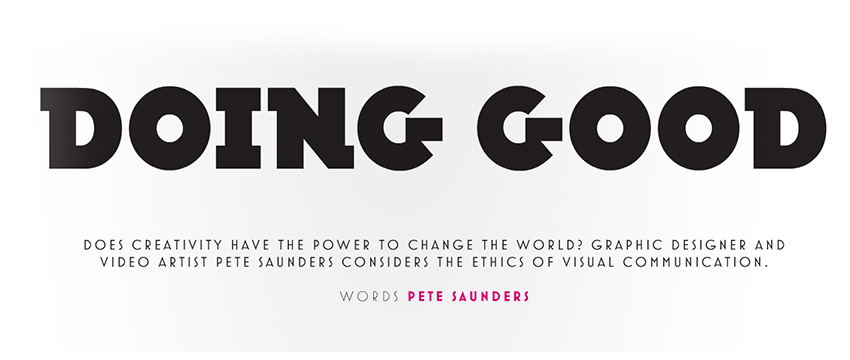
We all have a responsibility to protect our planet and the people who live in it. It’s not just world leaders and businessmen who have the power to create change – we’re all responsible for shaping this world; we’re all designers.
But for those with a global audience, the weight is greater. Influence is not a thing to be taken lightly, and if you have it, you should use it as a force for good.
Keen to spark a conversation, POC Mag invited a tuned-in designer to share his ethical perspective. We all have a responsibility to protect our planet and the people who live in it. It’s not just world leaders and businessmen who have the power to create change – we’re all responsible for shaping this world; we’re all designers.
But for those with a global audience, the weight is greater. Influence is not a thing to be taken lightly, and if you have it, you should use it as a force for good. Keen to spark a conversation, POC Mag invited a tuned-in designer to share his ethical perspective.
Recently, the idea of environmentally sustainable design has become hot topic. As industries plunder the planet’s resources, people are no longer happy creating waste without a second thought. Magazines are moving online, advertising campaigns are going digital and materials are being chosen on their environmental credentials, not just the way they look and feel. More consideration, however, needs to be given to the relationship between designers and clients; who they are and what they represent. Should designers feel an ethical or moral responsibility for the role they played in its market success, or are they exempt because they were simply representing their client?
Eager to find answers to these difficult questions, I started to investigate how the design industry views ethical issues. By doing so, I wanted the design community, as the interface between the client and the consumer, to seriously consider what responsibility it holds.
The idea was to consider whether or not ethical decisions have a place in the industry and how much control, if any, designers have to dictate their own ethical code. Should designers agree to any given contract or should they educate themselves about the clients and their products, before making an informed decision about whether to represent them?
Contemplating this conundrum led to a wide variety of responses. A professor of design at a highly regarded institute of education in the US suggested designers have a professional responsibility akin to doctors or lawyers to represent their clients despite personal opinion. Others, especially designers just starting in the industry, were more ideological, believing that they had a responsibility to acknowledge the current impact of our lifestyle on the planet and actively work towards improving it in any way they could. This difference of opinion could simply be viewed as naïvety versus experience, but it could also signify a change in the collective conscience.
Many people outside the industry view designers as overpaid ad makers or visual guns for hire, but there is a swathe of subversive nonprofits like Positive Posters – an Australian-based project that invites designers to create artwork for an annual poster competition – aiming to raise awareness about global social issues.
According to their website, “Our community was founded upon our belief in the unrivalled ability of designers to create, impact, communicate and spark revolutions.” Such designers have the education and intelligence to carry out research and filter information. They not only see the value of considered design, but also the importance of visual communication in educating those around them. These individuals will help shape how society views itself in the future; they will dictate the visual language of our generation.
Designers can refuse to represent clients. Despite the undeniable and unavoidable pressure that the economy places upon designers (as with any industry), this ability has been exercised more frequently in the last few years and its impact cannot be overstated. Designers have the opportunity to collaborate with industry leaders and create work that informs and educates the public in an accessible way, contributing positively to society. Take Girl Effect, a collaboration between the Nike Foundation, the NoVo Foundation and the United Nations Foundation. Its simple yet powerful message about the transformative effects of educating young girls in impoverished, developing countries is presented in a visually stunning, informative and memorable way, and has an extraordinary impact.
As we are bombarded on a daily basis with visual stimuli, the focus of the design industry should shift toward those with the most interesting and important message, not those with the deepest pockets. The most fascinating and frustrating aspect of ethics is that they are not set in stone. Our ethical decisions are based upon our internal and external experiences, as well as our heritage, culture and beliefs. They are an ever-changing set of standards that we apply to our lives and our profession should not be excluded from that process. Like any skill or knowledge set, we should continually revisit and refine it. We shoild improve it, not forget it.